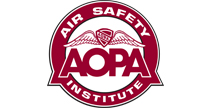Hosed! Did sloppy wash job cause Cirrus crash?
MIA04LA070
 When you’ve got a dirty bird, a thorough sudsing can make it shine like new—or cause some serious problems. If the airplane isn’t carefully prepped, wash water can get into places it shouldn’t. And it only takes a spoonful to serve up big trouble.
When you’ve got a dirty bird, a thorough sudsing can make it shine like new—or cause some serious problems. If the airplane isn’t carefully prepped, wash water can get into places it shouldn’t. And it only takes a spoonful to serve up big trouble.
On April 10, 2004, shortly after launching into instrument meteorological conditions (IMC), the pilot of a Cirrus SR22 deployed the airframe parachute after his flight instruments displayed erratic readings. The Cirrus descended under canopy and was substantially damaged when it collided with trees. The pilot was uninjured. NTSB investigators determined that the static system was blocked by one teaspoon of tap water. The airplane had been washed on the day before the accident.
IMC prevailed for the intended flight between Fort Lauderdale Executive Airport in Fort Lauderdale, Fla., and Palm Beach International Airport. The pilot found no discrepancies during preflight inspection or engine run-up. He obtained his IFR clearance and departed just before 10 a.m.
The flight encountered IMC at 400 feet msl. While communicating with Miami Center and climbing at 800 feet per minute, the pilot reported that his vertical speed indicator suddenly decreased to zero, then increased to 2,000 fpm, then went back to zero. No turbulence was encountered during this time.
The pilot advised ATC that he needed to return to Fort Lauderdale Executive. Shortly after, the altimeter began “bouncing” with very large deflections. The pilot also claimed that the attitude indicator did not agree with the turn coordinator. After advising ATC that he was “losing gauges” and would be unable to execute an instrument approach, the pilot announced that he was going to activate the airframe parachute system. The airplane descended into trees, coming to rest upright but substantially damaged in a wooded area about four miles from the airport.
After the wreckage was recovered, NTSB investigators tested the aircraft’s instruments. The attitude indicator and turn coordinator powered up normally. The airplane’s static system was tested to 1,000 feet, and the associated flight instruments were found to operate erratically. The vertical speed indicator fluctuated between 500 and 2,000 fpm, the altimeter indicated 200 feet, and the airspeed indicator showed 60 knots. The instruments did not return to zero when the pressure was returned to sea level.
When the pitot-static system was tested from the alternate air source, however, the instruments displayed no discrepancies. (The pilot did not activate the alternate static source in flight.) Examination of the static lines revealed approximately one teaspoon of water between the static port openings and the alternate static air valve. The water sample was tested and found to contain 3.2 mg/L of fluoride, a common additive in tap water. Further investigation revealed that the airplane had been washed on April 9—one day prior to the accident.
The NTSB concluded that the accident was caused by erratic operation of the pitot-static flight instruments due to water contamination—and the pilot’s failure to take the appropriate corrective actions.
An airplane’s pitot-static system operates the altimeter, vertical speed indicator, and airspeed indicator. In this system, impact air pressure is taken from the pitot tube, while static pressure is usually taken from the static line attached to a vent or vents mounted flush with the side of the fuselage. When an aircraft is washed, care must be taken to cover the static ports and other portals with waterproof, removable tape to prevent water intrusion. (According to the NTSB report, this precaution was reportedly taken when the accident aircraft was washed, but the outcome implies otherwise.)
Blockage of the static line will cause the associated instruments to behave erratically, which is why most aircraft are equipped with an alternate static source that can be activated from inside the cabin. It’s also possible to bypass a blocked static port by breaking the glass on one of the associated instruments—ideally the vertical speed indicator—thus venting the system to the cabin.
The important thing is to remember these options when the moment calls for corrective action. Given the choice between pulling the alternate static source and pulling the airframe parachute, it might be a good idea to try the former option first.
Related Links
Related Videos:
- Cirrus Airframe Parachute System (CAPS™) deployment video
- Amateur video footage of Cirrus descending under canopy
Related Resources: